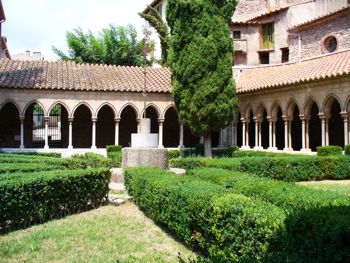A (very brief) HISTORY OF THE PYRENEES-ORIENTALES
Finding out a little about the history of the region can teach us where many of the towns and villages of the Pyrénées Orientales got their names.
Architectural digs around Millas and Le Boulou have found tools dating back about a million years, proving that a population of ’homo erectus’ existed so far back.
The 450,000 year old Tautavel man is probably the most famous historical discovery in the region. He was dug up in a cave, la Caune d’Arago, near the pretty village of Tautavel – in good condition considering his age!

Mining of copper and bronze became one of the Catalan trademarks round about 2,500 BC with iron following about a thousand years later. Civilisation was becoming more ’civilised’ and the first towns Ruscino (now known as Chateau Roussillon) and Illiberis (now known as Elne) were built.

It was in fact in Elne, much later, that Hannibal negotiated a safe passage for his men and 40 elephants across the Panissars Pass or the Perthus.
In the fifth century BC, the Sordes lived on the plain (Sorède) and the Cérètes lived on the Cerdagne plateau in the Vallespir (Céret)

In 462AD the Visigoth king Théodoric ll named the regions of Lanquedoc and Roussillon Septimania. The Visigoths remained in the Roussillon for nearly three centuries and introduced Christianity to the region, strengthening the church and increasing its power.
Catholicism actually came much later.
In 778AD, groups of religious figures, nobles and intellectuals started to arrive in the region, attracted by the policy of tolerance and often escaping persecution in other parts of Europe. It was at this point that several abbeys and monastries were founded. Saint-André-de-Vallespir, Saint-André-de Sureda (Sorède), Arles-sur-Tech and Saint-Michel-de-Cuixa.

In the 9th century, the powerful ’Order of the Knights Templar’ (if you’ve read Da Vinci Code by Dan Brown this should ring a bell) set up very productive agricultural zones from their headquarters in the Mas Deu in Trouillas and the Roussillon counts and nobles settled in Perpignan although the town was actually named Perpinyà by Pierre ll (nicknamed ’the Catholic’) in 1197.

The last of the Roussillon counts, Girart ll, sick and tired of the continuous strife and bickering in his family, left all his land, including Roussillon, to his rival, Alphonse l, Count of Barcelona.
Relations between Catalonia and Castile worsened and the Pyrénées-Orientales was caught up in a constant tug of war. When France and Spain declared war upon each other in 1635, the Catalans rose up against the Castilian crown.
Following the uprising of the ’Segadors’ (reapers or harvesters) the Treaty of the Pyrenees was signed between Philippe lV of Spain and Louis XlV of France and the regions of Roussillon, Conflent and 33 villages from the Cerdagne were handed over to France.
The Pyrénées-Orientales became a recognised department in 1790 when villages from the Fenouillèdes were added to Roussillon which was considered too small on its own, having been much diminished over the years by war and epidemic.
In 2005, Georges Frêche became President of the Languedoc Rousillon Regional Council, and immediately recommended that the region revert to its ancient name – Septimanie. Sounds a little like an infectious disease, n’est-ce pas?
Protests throughout the region and a petition of 45,000 signatures made it clear that the change would be somewhat unpopular – so Languedoc Roussillon it remained.
Nearly 20 years later, in an attempt to reduce bureaucracy, the 22 administrative regions of France have been cut down by nearly half, into ‘super-regions’, and Languedoc Roussillon has merged with the Midi-Pyrénées and is no more. Welcome to L’Occitanie – with a ’subtitle’ of ‘Pyrénées-Méditerranée’ below.


Really interesting. I am really looking forward to visiting this area in September. Thank you.